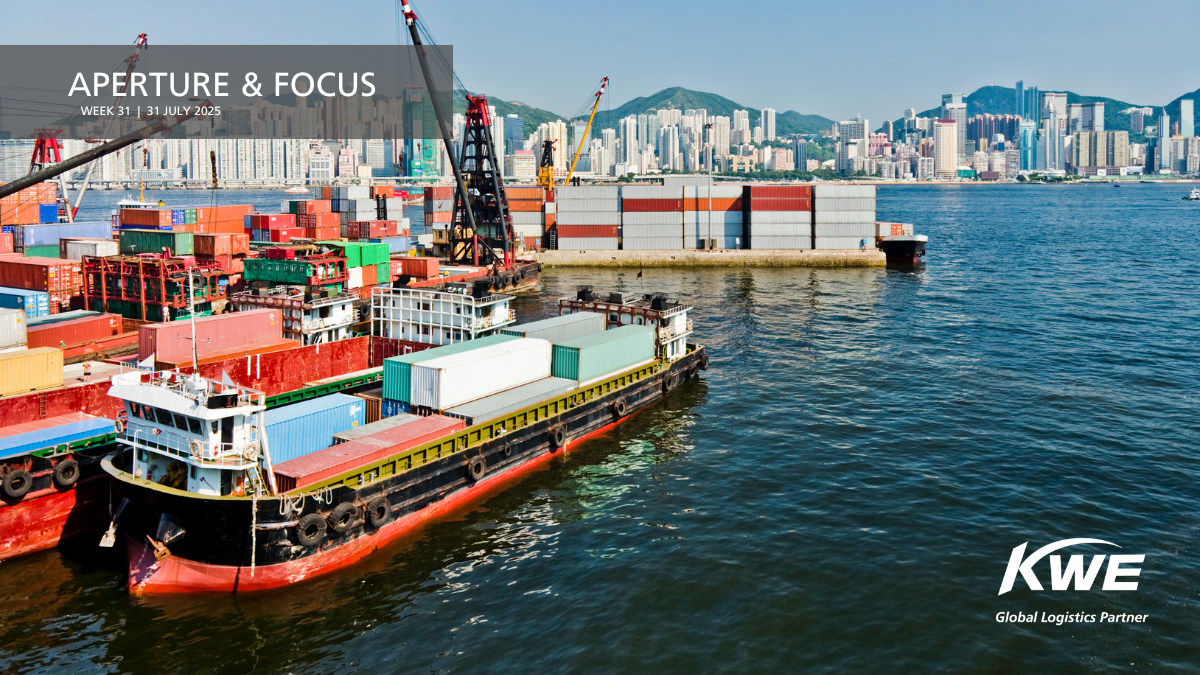Quote
Aperture & Focus 2025: Week 31

Global Aperture
In the lead-up to U.S. President Trump’s August 1st tariff negotiation deadline, several countries have reached trade deals to avoid steep new tariffs. A major agreement was announced between the U.S. and the European Commission, setting a 15% tariff on most European imports and ending the previous 25% tariff on European automobiles. As part of the agreement, the European Union would purchase $750 billion in U.S. energy. In addition, certain strategic products, including aircraft parts, specific chemicals, and select agricultural goods, will not be subject to tariffs.
Japan also secured an agreement to a 15% reciprocal tariff, lower than the originally proposed 25% by the U.S. Additionally, Japan will open its economy further to U.S. goods. Meanwhile, the U.S. President announced a new 19% tariff on imports from the Philippines.
Starting August 1st, the U.S. announced they will impose a 25% tariff on Indian imports, with the possibility of additional penalties tied to India’s ongoing energy purchases from Russia. The announcement follows stalled trade negotiations between the two countries.
Air cargo tonnages on Asia-Pacific–U.S. lanes rebounded in mid-July, with strong gains from Southeast Asia and a 9% rise from Japan, according to market data provider WorldACD. However, as worldwide tonnages still dipped 2% overall, WorldACD noted that the July 14–20 increases were more likely a correction of the previous week’s declines than a surge ahead of the August 1 U.S. tariff deadline.
Regional Focus
Americas
United States: Union Pacific has proposed an $85 billion merger with Norfolk Southern to form the first transcontinental freight railroad in the U.S., connecting ports on both coasts through 50,000 miles of track. The railroads say the merger will enhance service and supply chain efficiency, but regulators and labor unions have raised concerns about safety and reduced competition.
The U.S. President signed an executive order on July 30th to impose a 40% tariff on Brazilian imports on top of the baseline 10% general import tariff already in place. In response, Brazil’s President criticized the move but emphasized Brazil’s willingness to negotiate trade matters. The tariffs are set to take effect the week of August 5th and exclude certain products, including civil aircraft and parts, aluminum, tin, wood pulp, energy products, and fertilizers.
The ports of Savannah and Los Angeles each moved nearly 5 million twenty-foot equivalent units (TEUs) in the first half of 2025, with Savannah marking its second busiest fiscal year and Los Angeles setting a new June record. Long Beach, New York/New Jersey, and Houston also saw strong throughput, supported by trade shifts and continued infrastructure investment.
Asia-Pacific
The Association of Asia Pacific Airlines (AAPA) reported continued growth in June 2025 for carriers in the region. International air cargo demand rose 5.6% year over year, driven by a rebound in global manufacturing and strong demand for e-commerce and time-sensitive shipments. Freight capacity increased by 7.1%.
Thailand/Cambodia: Thailand and Cambodia began a ceasefire on July 29th following several days of deadly border clashes. Both governments have agreed to resume diplomatic communication and will begin formal boundary talks on August 4th. While conditions along the border have started to stabilize under the truce, land border crossings remain closed on the Thai side, while limited airspace restrictions are in place near the conflict zone, though commercial flights and airports are unaffected.
Singapore: Changi Airport handled 568,793 US tons of airfreight in Q2 2025, marking a 6.2% year-on-year increase. Import volumes led the growth, rising 8%. The top air cargo markets for the quarter included China, the United States, Hong Kong, Australia, and India.
Europe, Middle East & Africa
Netherlands: The Port of Rotterdam has begun a renovation of the Rozenburg Lock, a key passage for inland vessels that manages around 20,000 ship movements annually. The upgrade includes improvements to the lock chamber, gates, bridges, and control systems, with a six-month closure planned in 2026.